Category: Idaho National Guard
State Aviation Group trains with Boise Fire Department
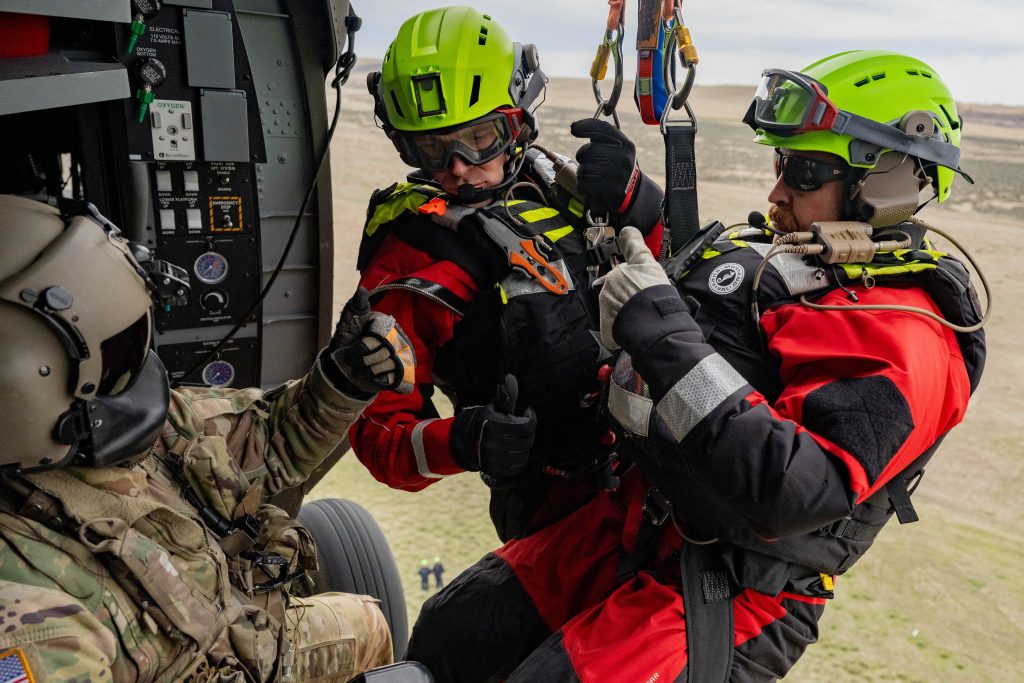
OCTC hosts 17th Field Artillery Brigade for HIMARS training
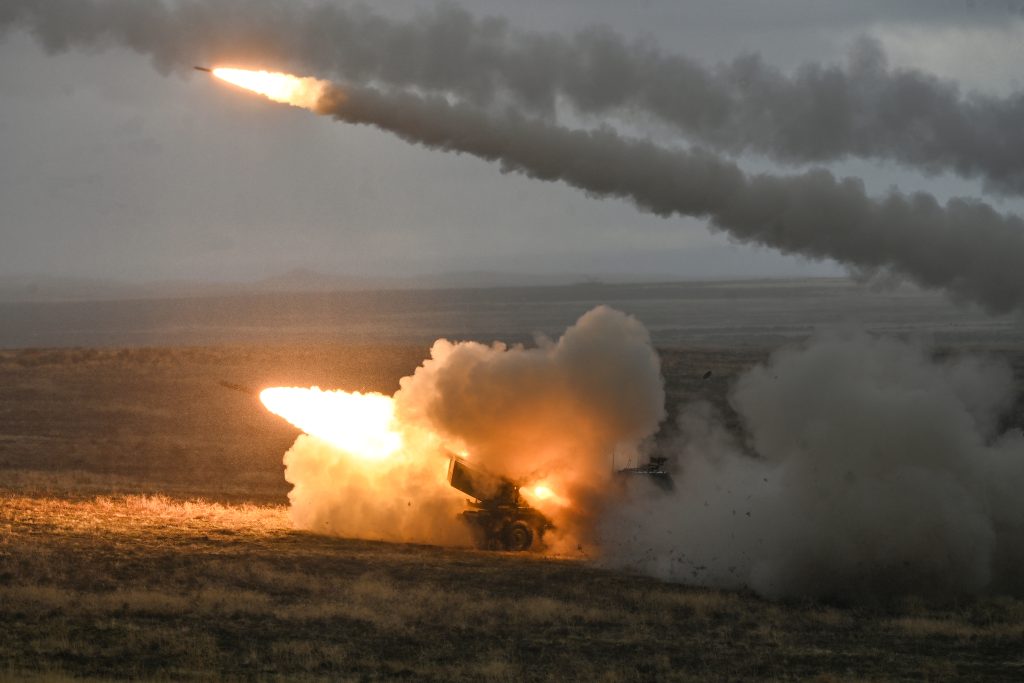
Idaho National Guard mobilizes 350 Guardsmen for Presidential Inauguration 60
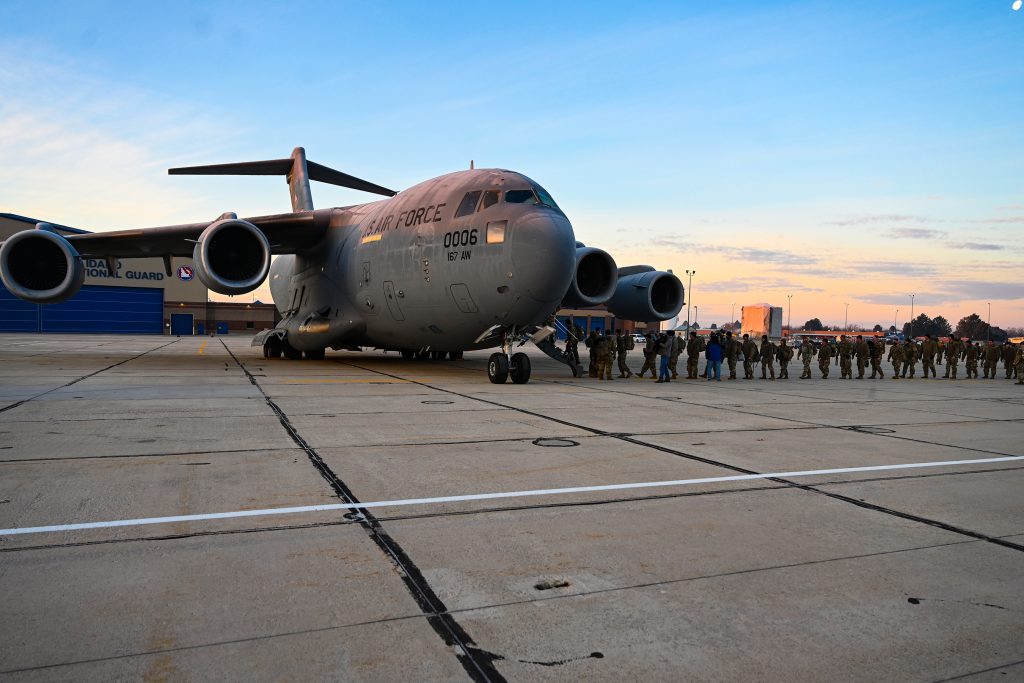
The Idaho National Guard mobilized approximately 350 Soldiers and Airmen to Washington, D.C. Jan. 17 to assist district and federal agencies with the 60th Presidential Inauguration.
“I am incredibly proud of the men and women of the Idaho National Guard as they mobilize to support civil authorities during the 60th Presidential Inauguration in Washington, D.C.,” said Maj. Gen. Tim Donnellan, adjutant general of Idaho and commander of the Idaho National Guard. “Their professionalism, dedication and unwavering commitment to our nation exemplify the very best of our state and our military tradition. I have full confidence in their ability to represent Idaho with honor and ensure the safety and security of this historic event.”
Idaho is one of approximately 40 National Guard states supporting the peaceful transfer of power between President Joe Biden and President-elect Donald J. Trump Jan. 20.
Guardsmen will augment the Washington D.C. National Guard and serve in support of the U.S. Secret Service, the lead federal agency responsible for coordinating the event, and assist the U.S. Capitol Police. Guardsmen will assist with crowd management, traffic control, emergency response services and other critical tasks necessary for the event’s success.
Idaho’s citizen-Soldiers and Airmen will return to Idaho following the inauguration.
The National Guard’s predecessors supported George Washington’s first inauguration and the National Guard has supported every inauguration since Abraham Lincoln’s in 1861. This mobilization maintains this tradition. More recently, the Idaho National Guard supported the 59th Presidential Inauguration in a similar role in 2021.
The Idaho National Guard also deployed a UH-60 Black Hawk company to Fort Belvoir, Virginia, last week for an unrelated year-long mission supporting the Joint Emergency Evacuation Plan in the National Capital Region, a routine rotational mission performed by National Guard units in support of the U.S Army.
Helicopter company deploys to National Capital Region
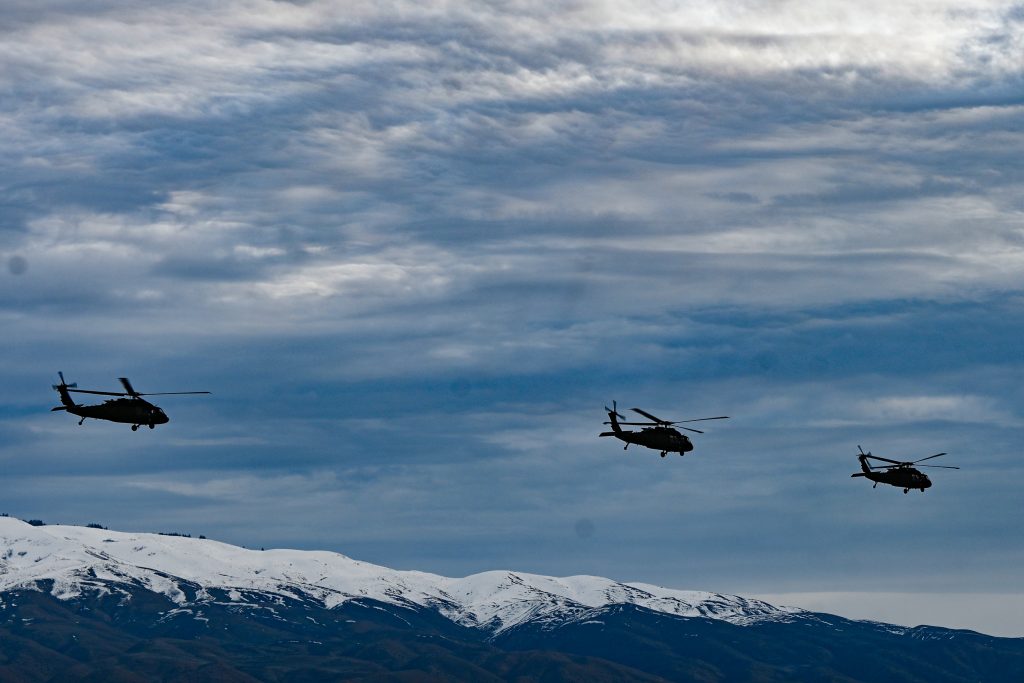
The Idaho National Guard deployed 10 UH-60 Black Hawk helicopters and more than 80 Soldiers to Ft. Belvoir, Virginia Jan. 10 and 11 on a year-long deployment in support of the Joint Emergency Evacuation Plan mission. Soldiers from the Idaho National Guard’s Company B, 1-183rd Assault Helicopter Battalion bid farewell to family and friends during a departure ceremony at Gowen Field Jan. 9.
“This mission is vital to the safety and security of our nation, and I truly believe each of you are the most valuable asset that we are taking with us,” said Capt. Eric Fitzpatrick, B Co. commander. “Each of you has been trained to meet the challenges that you are about to face, and I believe you are the backbone of this mission.”
Maj. Gen. Tim Donnellan, commander of the Idaho National Guard, was on hand to wish the Soldiers farewell and remind family members of resources available to them should they need them.
“All the hard work, all the training that you have done will satisfy the requirements for this incredible federal mission,” said Donnellan. “I’m very proud that, once again, Idaho is stepping up and we are answering the call, and we are doing what we said we would do. We will be ready, and we will be relevant when asked to do these missions.”
The JEEP is a recurring mission shared by National Guard and active-duty units from across the nation. 1-183rd AHB will provide airlift capabilities to official personnel in the Capital Region.
U.S. Special Forces, Indian Army bring Vajra Prahar to Idaho
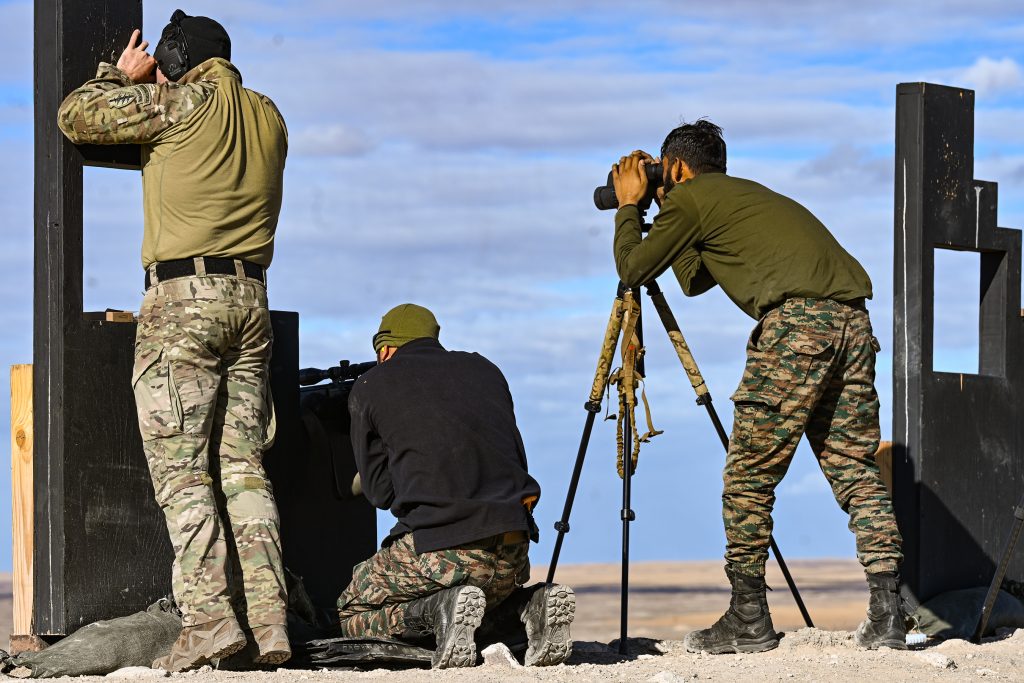
The U.S. Army’s 1st Special Forces Group (Airborne), along with partners from the Indian Army’s Special Operations Forces and the Idaho National Guard’s 124th Air Support Operations Squadron participated in Exercise Vajra Prahar Nov. 2 through 22 on Orchard Combat Training Center ranges and facilities. The exercise is designed to enhance cooperative relationships between the elite units, focusing on realistic training scenarios that challenge participants in complex environments.
The 124th ASOS was tasked to provide the Indian soldiers with Joint Terminal Attack Controller and close air support instruction to enhance interoperability between Indian and U.S. special operations forces.
“We helped build stronger relationships with the partner force by demonstrating the Tactical Air Control Party’s commitment to their success and providing them with valuable training and resources,” said Master Sgt. Douglas K. Brock, a JTAC with 124th ASOS. “In the end, the 124th ASOS showcased their ability to work with anyone, anywhere, at any time to achieve mission success by maintaining a high level of readiness, while also building a foundation for future training and development opportunities.”
Vajra Prahar is an annual exercise, now in its 15th year, and changes locations annually between U.S. and Indian training facilities to improve the special operators’ ability to work together in a variety of terrain and climate combinations. This is the first time the exercise has taken place in Idaho.
“The airspace and training facilities have been awesome at the OCTC,” said a member of 1st SFG(A). “They’ve given us the ability to run CH-47 Chinook missions, live talk on JTAC training, conduct sniper training and make direct-action assaults on multiple urban objectives.”
The combination of the realistic training environment and integration of skillsets from each of the participating units fostered tactical improvements and stronger relationships among the partner-nation forces, according to the 1st SFG(A) Soldier.
“By engaging in this rigorous training, participants develop their skills improve communication and foster a spirit of collaboration that is essential for successful operations in real-world situations,” he said. “Working alongside our partners across the Indo-Pacific region increases security capacity and interoperability among our forces.”
The OCTC, a 173,000-acre training center is a premier joint combined arms training site located 18 miles south of Boise, provides world-class training facilities for war fighters from all U.S. Armed Forces and partner nations from around the globe.
Idaho Army National Guard Names Honorary Unit Commanders
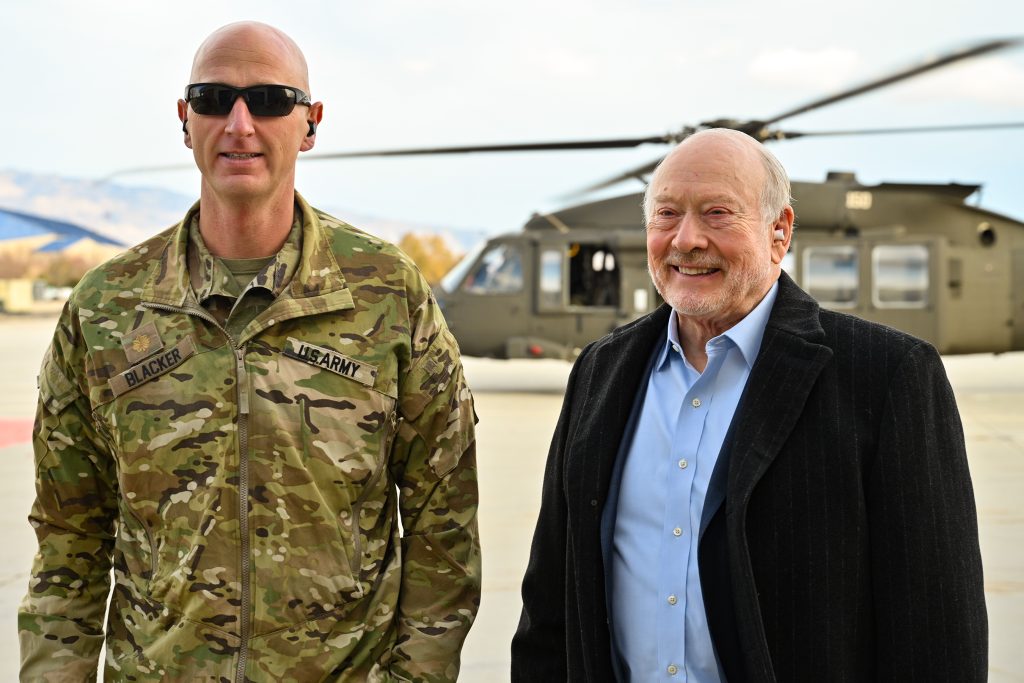
The Idaho Army National Guard welcomed 10 new honorary unit commanders to its ranks Friday. Honorary commanders are selected from among business, education and civic leaders to participate based on their desire to gain increased awareness and understanding of the Idaho Army National Guard’s mission, policies and programs.
“Our Honorary Unit Commander Program is a vital bridge between our Guardsmen and the communities we proudly serve,” said Brig. Gen. Cole Packwood, commander of the Idaho Army National Guard. “This program fosters a deeper understanding of our mission and provides an opportunity for community leaders to experience firsthand the dedication of our Soldiers.”
The honorary commanders received a history and capabilities brief and tour which included opportunities to interact with National Guardsmen and learn more about equipment like Bradley Fighting Vehicles, Abrams tanks and Black Hawk helicopters.
Six of the honorary commanders will serve with units headquartered at Gowen Field in Boise. Dr. Paul Bennion, the vice president for student affairs and dean of students at College of Idaho, will serve with the Idaho Army National Guard Training Center. West Ada School District’s superintendent of school Derek Bub will serve with the 116th Cavalry Brigade Combat Team. Debbie Critchfield, the Idaho Department of Education’s superintendent of public instruction, will serve with the Idaho Army Guard’s Recruiting and Retention branch. FBI Special Agent Dan Ramirez will serve with the 101st Civil Support Team. Bill Waterman, the assistant director of athletic bands at Boise State University, will serve with the 25th Army Band. Current Idaho State Sen. Charles Winder will serve with the 204th Regional Training Institute.
In other parts of the state, Pastor Dave Bruyette of Mountain Lakes Bible Church will serve with the 145th Brigade Support Battalion, which is located in northern Idaho and headquartered in Lewiston. City of Jerome Mayor David Davis will serve with the 116th Brigade Engineer Battalion, which is headquartered in Twin Falls. Frank VanderSloot of Melaleuca, Inc. will serve with the 1-148th Field Artillery Regiment, located in eastern Idaho and headquartered in Pocatello. Greg Wiles, superintendent of Nampa Christian Schools, will serve with the 2-116th Cavalry Regiment, which is headquartered in Caldwell.
The Honorary Unit Commander Program educates key community leaders about the Idaho Army National Guard’s mission and to foster a partnership with the community. Throughout their tenure, they will work closely with their assigned unit commanders and staff and be invited to participate in unit ceremonies and observe selected training events.
“These partnerships enhance the connection between our organization and the public, reinforcing our role as a trusted and integrated force in Idaho and beyond,” said Packwood.
The Idaho Army National Guard is headquartered on Gowen Field in Boise and consists of nearly 3,000 Soldiers. Its largest unit is the 116th Cavalry Brigade, with armories in nearly two dozen Idaho communities and battalions in Montana, Nevada and Oregon. The 1-148th Field Artillery Regiment, 116th Brigade Engineer Battalion, 145th Brigade Support Battalion and 2-116 Cavalry Regiment are four of the 116th Cavalry Brigade Combat Team’s seven battalions. The 1-183rd Aviation Regiment, located in Boise, completes the majority of the Idaho Army National Guard’s combat power.
First HH-60M Black Hawk Arrives at Gowen Field
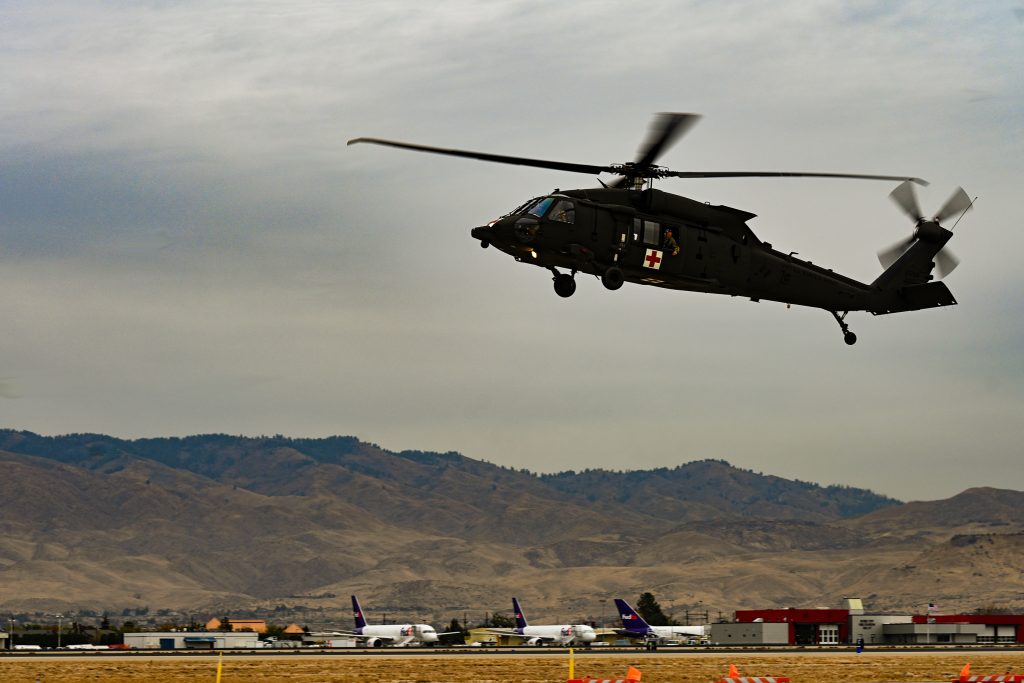
The next phase in Idaho Army National Guard modernization efforts began Oct. 23 with the arrival of a new HH-60M Black Hawk helicopter at Gowen Field. It is the first of six expected to be delivered over the next six to eight months.
The HH-60M is the medical evacuation version of the UH-60M Black Hawk and will replace the Idaho Army National Guard’s fleet of UH-60L helicopters, which frequently support local and state agency search and rescue missions. The Idaho Army National Guard completed the upgrade of its utility helicopter fleet to the UH-60M in 2022.
“Upgrading our MEDEVAC helicopters to the M model is more than an investment in equipment—it’s an investment in our Soldiers,” said Idaho Army National Guard Commander Brig. Gen. Cole Packwood. “With enhanced medical capabilities coupled with improved and advanced flight controls, these helicopters are mission-critical assets that directly impact our ability to save lives, ensuring that we meet the mission with speed, capability and the highest standards of care possible. Our troops deserve nothing less.”
The new MEDEVAC helicopter includes all upgrades included in the UH-60M with the addition of improved cabin configuration and integrated medical capabilities not present in the UH-60L models. These capabilities include an onboard oxygen generation system, medical suction, electrical outlets that can be used to power specialized medical equipment, and an environmental control system that can be used to help stabilize patients suffering from heat or cold injuries.
Changes to the HH-60M airframe and interior will also result in increased proficiency whether during combat operations abroad or search and rescue missions closer to home, according to Chief Warrant Officer 4 John Jacobs, the production control officer for the 1-183rd Aviation Battalion. One such improvement is integration of the rescue hoist mount to the airframe.
“This will reduce drag, allowing us to fly faster or use less fuel,” said Jacobs. “In either case it allows us more loiter time on site to conduct operations.”
The forward interior of the new Blackhawk boasts an electric litter lift, improving capacity to up to six littered or seated patients in addition to the hoist operator and medic seats, which have been moved to the rear of the interior to increase the mobility and effectiveness of those personnel. A hoist operator-controlled search light has also been added to the undercarriage, enabling that Soldier to spotlight injured personnel or lost hikers for rescuers. Additionally, the forward-looking infrared camera has been moved to the helicopter’s nose for a more unobstructed view and its images can be shown directly on the pilot’s multi-function display.
As the new helicopters arrive at Gowen Field, its UH-60L MEDEVAC fleet is being fielded to other area Army National Guard units, extending the capabilities of those units while stretching the taxpayer dollar to the maximum extent possible, according to Jacobs.
“We’re very lucky to have a young and modern fleet,” he said.
Idaho Army National Guard Modernization Continues with Fielding of Latest Artillery Platform
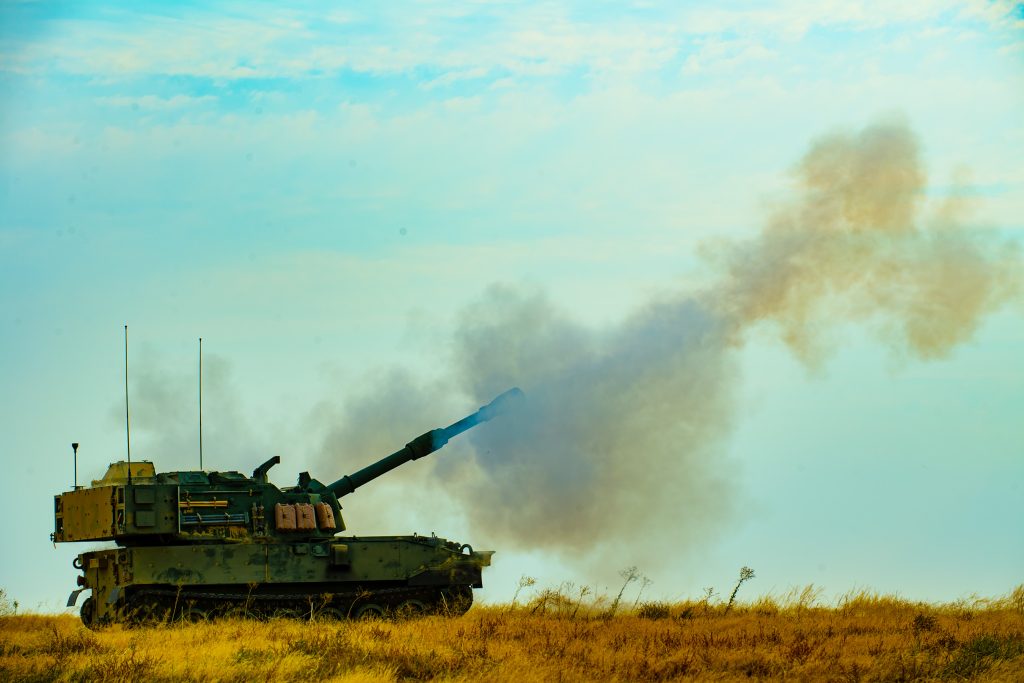
The 1-148th Field Artillery Regiment is the latest unit in the Idaho Army National Guard to upgrade its combat capability as modernization efforts across the U.S. Army and Army National Guard take shape. The unit has received 18 new Paladin M109A7 next-generation artillery systems and conducted its first live-fire exercises utilizing the long-range guns earlier this month at the Orchard Combat Training Center in Boise.
The new Bradley Fighting Vehicle chassis-mounted howitzer includes upgrades that increase ammunition capacity, rate of fire and mobility on the battlefield while decreasing some maintenance repair requirements.
“The biggest upgrade has really been the transition away from hydraulically run systems to electronically run systems, which has reduced the amount of operator-level maintenance that my guys have to do,” said Capt. Stephen Pyper, commander of Battery C, 1-148th FAR. “It has also freed up a lot more space within that platform, so we’re able to increase our round capacity by 10 additional rounds. We’re able to provide a much faster response from the time we receive fire missions, to being in the correct positions and elevations to fire those missions.”
Pyper said mounting the Paladins on the Bradley chassis creates commonalities that may also help get them back online more quickly when things break.
“One of the biggest expenses in the brigade is being able to maintain all our equipment at an operational rate that allows us to complete our mission,” he said. “Now we can utilize the same parts on our platform that the maneuver units are using. I’m hoping we’ll see our requests for parts processed faster because many of them are the same parts that are going on those maneuver fighting vehicles.”
Pyper gives credit for the success of the field exercise to his Soldiers’ level of engagement during the training cycle leading up to this first live fire opportunity.
“I was very impressed with how enthusiastic they were and how quickly they learned these new systems, especially the senior noncommissioned officers, whose responsibilities are not focused on being in the vehicles with the crews during operations” said Pyper. “All our senior NCOs were engaged throughout the training cycle. That’s important because I rely on them and their expertise when it’s time to evaluate our crews on the training tables, to be the subject matter experts on these vehicles and to be able to answer questions when our crewmembers are unsure about how to deal with certain situations.”
The integration of the new Paladins follows the Idaho Army National Guard upgrade of its UH-60 Black Hawk helicopter fleet to the UH-60M model, which concluded in 2022.
“Our modernization efforts contribute directly to the joint force’s ability to deter aggression and our ability to fight and win decisively when called upon,” said Brig. Gen. James C. Packwood, commander, Idaho Army National Guard. “The fielding of the Army’s newest equipment to the Idaho Army National Guard demonstrates that we are a relevant force, integral to the national defense strategy.”
Idaho Army National Guard announces Best Warrior winners
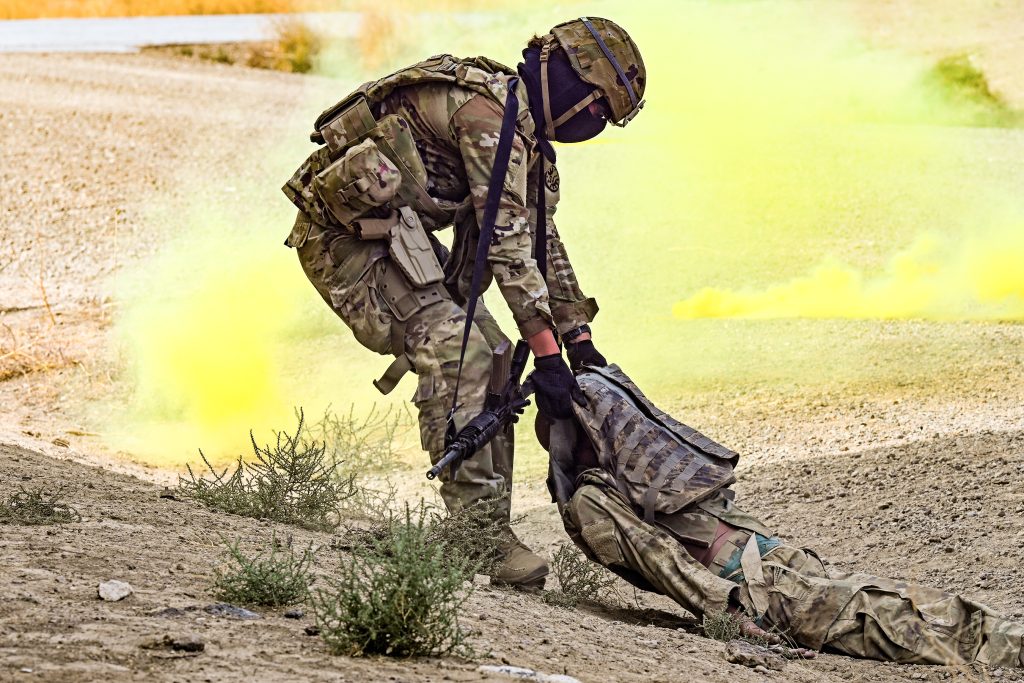
Sgt. Jake Gardiner and Spc. Tyler Barlass have been named Idaho Army National Guard’s Best Warriors after a grueling four-day competition. Gardiner won in the noncommissioned officer category, and Barlass won in the Soldier category. Both Soldiers are assigned to Headquarters and Headquarters Company, 2-116th Combined Arms Battalion.
Events included weapons assembly and immediate action drills, physical readiness testing, combatives, land navigation, tactical combat casualty care, a timed ruck, individual weapons qualification, and a culminating event.
The final event incorporated a simulated urban battle scenario that required competitors to engage live and stationary targets from separate fighting positions, clear rooms, perform basic lifesaving measures on a casualty, call for medical evacuation and deliver a casualty dummy to a helicopter for treatment and transportation.
“It was definitely challenging,” said Gardiner. “That was probably the most fun part of the competition. It was like stepping into a live video game.”
This year, 10 Soldiers competed for the title of Best Warrior. Idaho Army National Guard Command Sgt. Maj. Kevin A. Dean said nearly 200 personnel helped plan, prepare and execute the event.
“It was very well organized,” said Barlass. “It covered a lot of different skill sets, and I really liked the way they took the time to teach us some things before we were tested on each event as well. I learned a ton about weapons systems that I had never touched before, combatives and land navigation. I feel like I was really able to hone some skills and learn new things just by competing in this.”
Dean said he was impressed with both the competitors and the Soldiers who helped plan and execute the event.
“It’s very Invigorating as a senior NCO to see the caliber of Soldiers within the organization competing and the professionalism, proficiency and technical ability of those who were responsible for the individual events,” said Dean. “Seeing both the Soldiers’ and the units’ performance over those four days leaves no doubt in my mind that the future of the Idaho Army National Guard is in good hands.”
Dean said the challenges presented to the competitors helped further hone warrior skills, while testing their mental and physical stamina.
“I’m super proud of all 10 Soldiers,” said Dean. “Each won at least one individual event, and there were no dropouts or major injuries. We got to see individuals turning into a team and we all learned more about the competitors as far as their resilience, MOS, civilian jobs, and personal interests.”
“Those are some of the best people I’ve ever met in the Army,” said Gardiner. “We were competing as individuals, but everyone really helped one another every day. I’m proud of the win, but I’m prouder of the way everyone supported each other the whole time.”
Gardiner and Barlass will represent the Idaho Army National Guard against Soldiers from seven states during the regional competition in May. The event will be hosted at Gowen Field and is expected to be even more challenging according to Dean, who leads the planning team.
“I’m really excited for that competition,” said Barlass. “I have all the time I need to get fully prepared this time and I’m hoping to make it to the Nationals later this year.”
Other Best Warrior competitors included Staff Sgt. Seth T. York, Sgt. Jonathan Popocabustos, Sgt. Matthew J. Warner, Spc. Cali M. Shipman, PFC Joshua T. Dougherty, PFC Trenton S. Hawker, PFC Brent M. Rasmussen, and Pvt. Daniel A. McClymonds
German Soldiers Integrate with Idaho National Guardsmen for Field Exercise
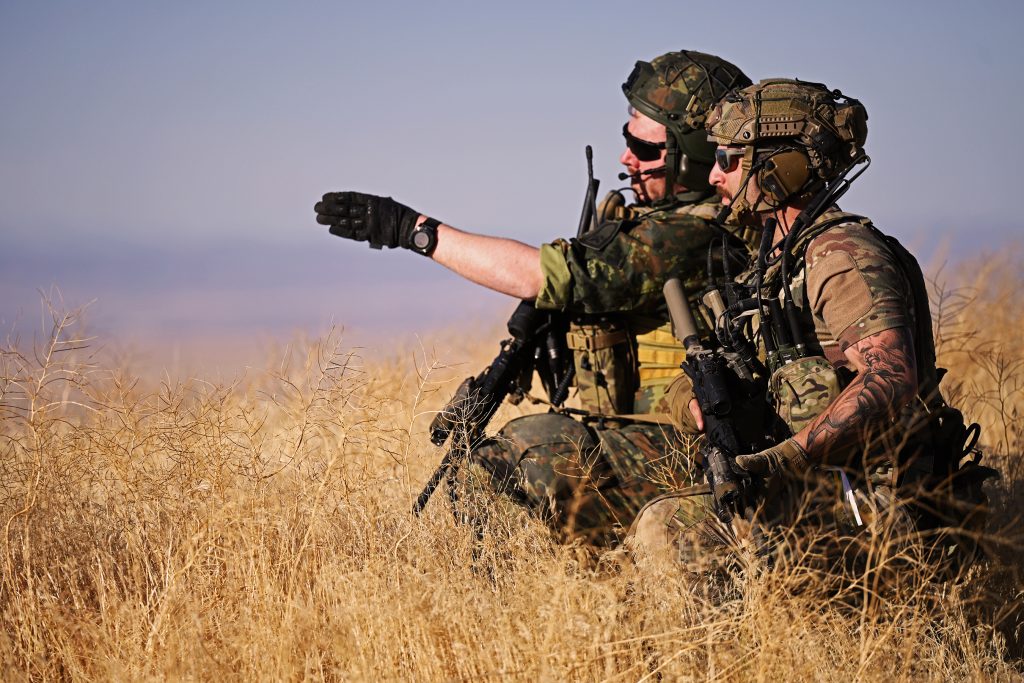
Idaho Air National Guardsmen from the 124th Air Support Operations Squadron partnered with the Idaho Army National Guard’s 1-183rd Assault Helicopter Battalion and soldiers from units based in Idar-Oberstein, Germany, to conduct a fully integrated field exercise to validate the Air Guard unit’s past two years of training Aug. 24-29.
The exercise played out on Gowen Field, Saylor Creek Air Force Range and the Orchard Combat Training Center and focused on five basic warfighter pillars: shoot, move, communicate, physical fitness and combat medicine. The field exercise included events corresponding to each of the five pillars, including live fire, convoy and tactical field movements, force-on-force scenarios, expedient field medicine and casualty evacuation.
Tech. Sgt. Alexander Hix, 124th ASOS standards of evaluation program manager, said the German soldiers integrated well with the unit despite the challenges of training in a new environment with unfamiliar equipment.
“They’re proficient in a lot of different areas, but one thing that definitely stood out was their willingness to jump in with both feet, be productive members of the team and try new firsts,” said Hix.
A joint tactical air controller and fire support officer who led the German detachment said seeing the planning process from the U.S. military perspective was a valuable experience for him, as was noting differences in leadership styles.
“What I saw of leadership here was very direct leadership, very good leadership and also very considerate of the men,” he said. “Caring for your men is a very good American strength that we’ve seen here, and I thought that was very impressive.”
He added that the German Armed Forces continued participation in exercises on American soil helps them to plan and develop ways to integrate American and other NATO nation troops into German units as they learn more about their capabilities and strengths.
Capt. Luke Nelson, 124th ASOS assistant operations officer, said the exercise itself provided data points for future improvement but more importantly, provided valuable experience to both the Airmen and their NATO partners.
“A very important piece of this for us is maintaining that relationship and broadening our horizons,” said Nelson. “This gives both their soldiers and our Airmen an opportunity to work alongside international allies in a field environment and to learn from one another. I think any time we can work with our partner nations and practice the craft that we’ve developed over the course of our careers, it’s going to make it far less painful in the event that we ever have to go to war together.”
 Official Government Website
Official Government Website